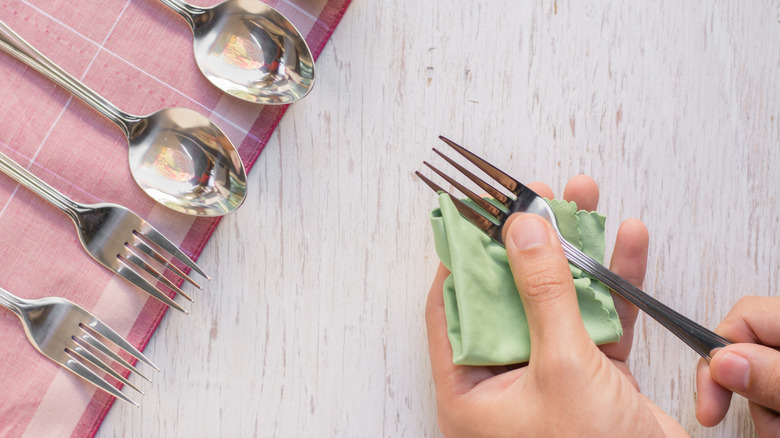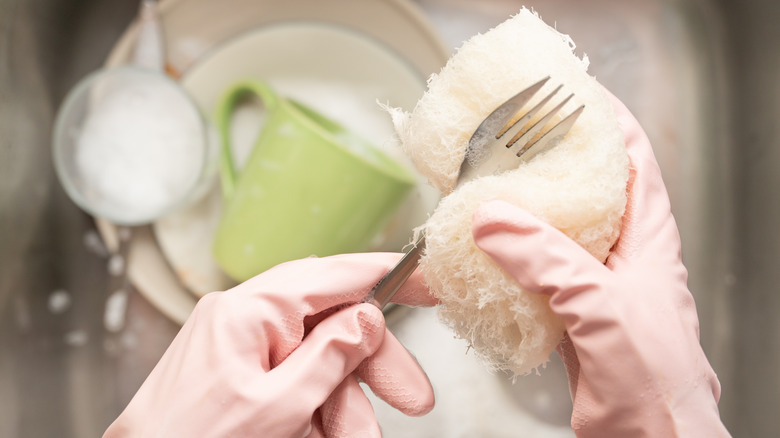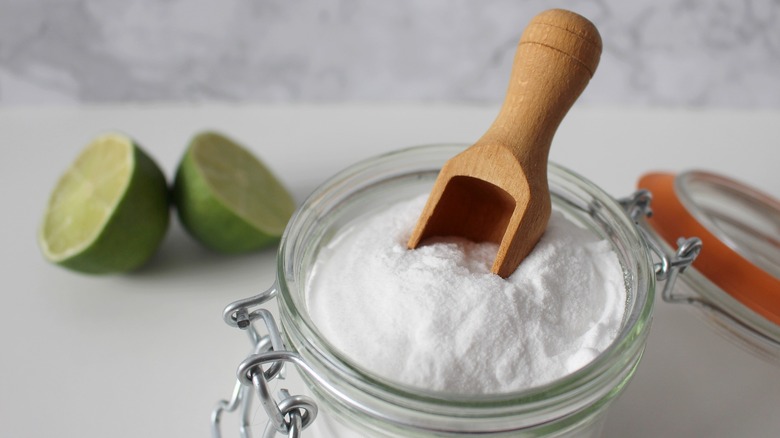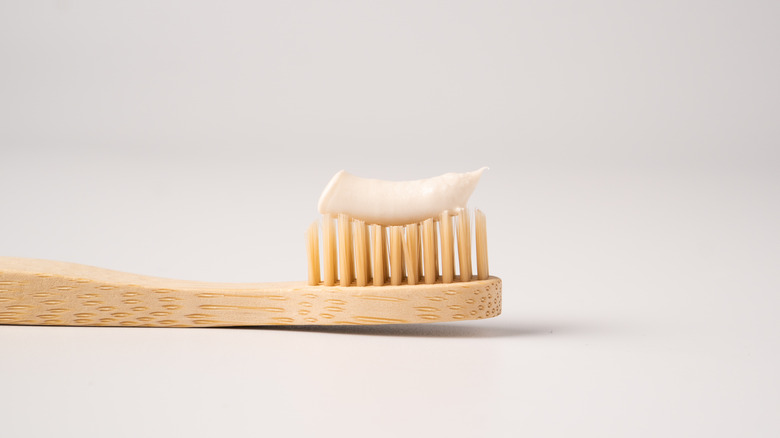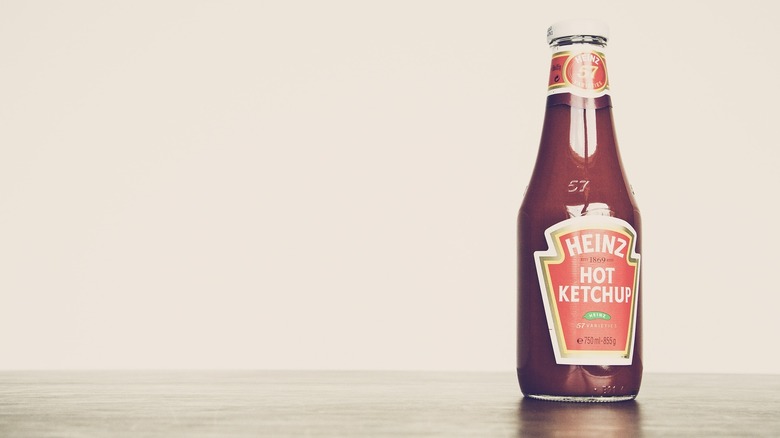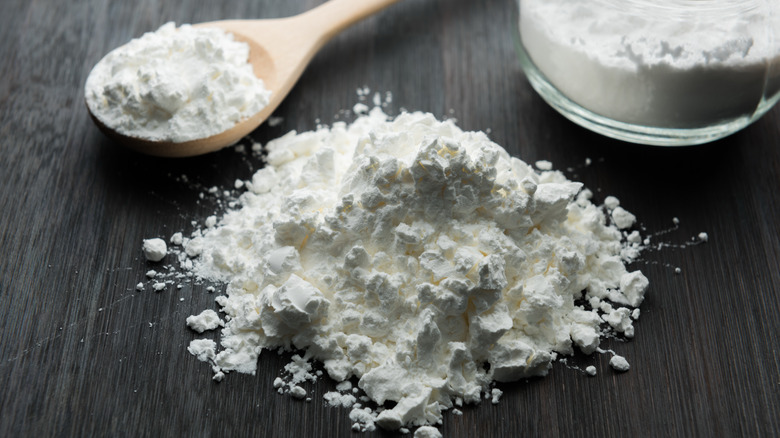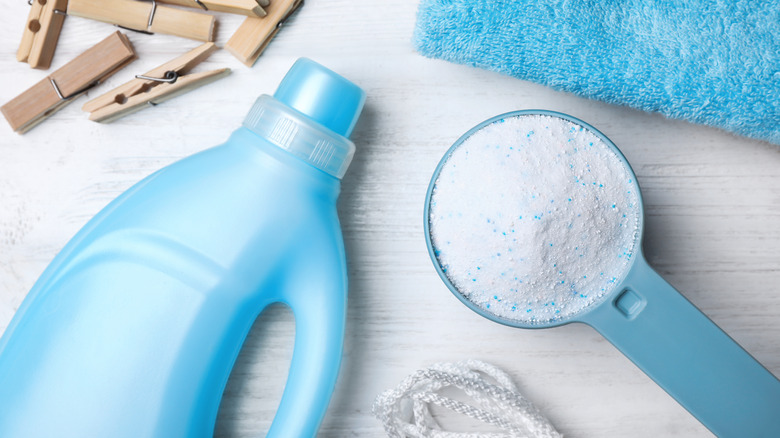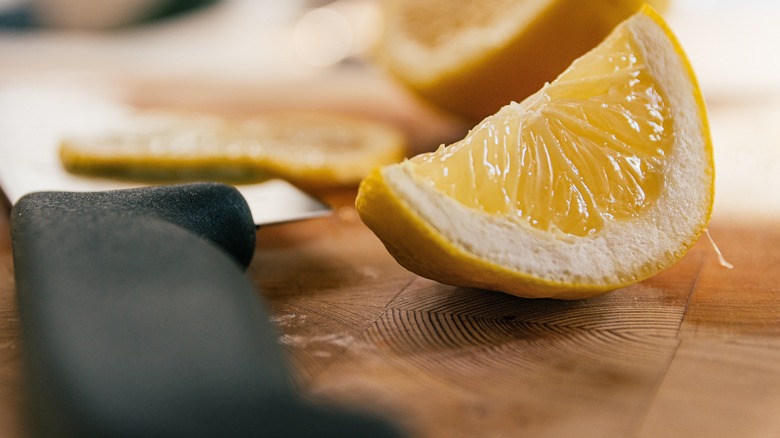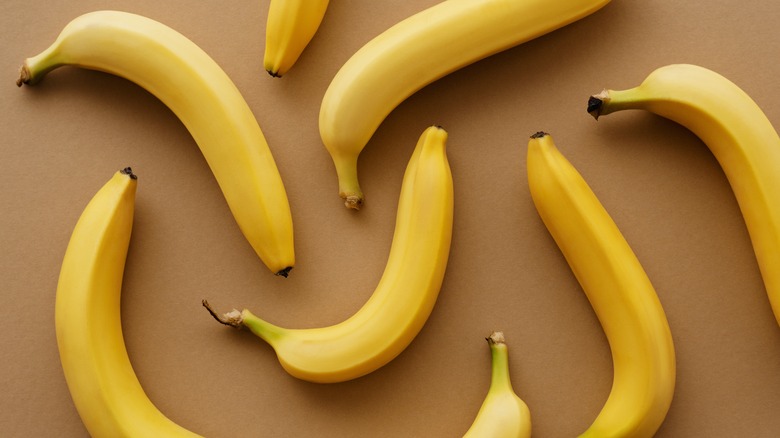The Best Way To Clean Silver Plated Items Without Using Any Chemicals
Cleaning silver plated items can be an anxiety-inducing task. Usually composed of brass or other metals and coated with silver, according to Something Borrowed, this common material is more susceptible to chipping than pure silver — especially when not cleaned often enough. Chips can even occur during cleaning when done improperly, as can erosion, due to the more fragile state of the metal.
When it comes to cleaning any silver, many people are put off by chemical silver polishes, as they tend to be very abrasive and can easily damage the metal if overused. With the more delicate state of silver-plated items, this is even more of a concern when trying to make your pieces last. The smell can also be overwhelming. Many people turn to natural, non-chemical alternatives for cleaning their silver plated items for this reason. Read on to learn about some of these natural home solutions for cleaning your silver-plated collection.
1. Dish soap and water
One easy way to clean silver plated items is using things you already have, like dish soap and water. Make sure the soap is gentle and free of any harsh or acidic chemicals to avoid further risk of the silver plating chipping or flaking.
To make the cleaning solution, Home Depot instructs to mix the dish soap with warm to hot water. Using a soft material, like a microfiber towel or flannel, dip it into the mixture and clean the item by gently rubbing and buffing it. You'll want to use a new, clean, and dry cloth to dry off the piece after it has been scrubbed down with the soap and water. Consider purchasing a towel made specifically for polishing silver. While most silver-plated items tend to be jewelry, they, along with other types of utensils and décor pieces of this material, should never be put into the dishwasher — clean them by hand only.
2. Baking soda and aluminum foil
This popular method for cleaning silver plated items requires aluminum foil, baking soda, salt, a bucket or deep sink, boiling water, and a soft towel (such as microfiber, flannel, or another non abrasive cloth), according to The Spruce.
To begin, lay the foil out over the bucket or sink, shiny side up. Add the baking soda and salt in equal parts, and then carefully add boiling water. The three items will begin to have a chemical reaction, so avoid the steam as you pour. Add your silver-plated item using a spoon or tongs, making sure they are touching the aluminum foil. Let the items soak for a couple of minutes, and then gently wipe it down with the towel or rag. If there is still tarnish or dirt left, add the piece you're cleaning back to the mixture and repeat the process as necessary. Let air dry, and gently buff out any water spots.
3. Toothpaste
This budget-friendly cleaning method uses something you very likely already have in your bathroom cabinet: toothpaste. That's right, versatile toothpaste has yet another use! According to Tree Hugger, for this method, you will need white toothpaste (not the blue or green gel kind) and a soft cloth that won't harm the silver plating. Make sure your toothpaste is not medical grade, and that it doesn't contain harsh or acidic chemicals that could damage the integrity of the silver plating.
To start, add a dot of the paste to the cleaning fabric of your choice, and gently wipe down the silver-plated item, targeting any areas of wear or staining. Any dirt or tarnish should easily come off. Add more toothpaste and repeat the process as necessary, until the silver plating is sparkling. Be careful not to chip or erode any of the silver plating, though. Finish by buffing your silver gently.
4. Ketchup
Another economical and convenient way to clean silver plated items is with ketchup, according to Better Homes & Gardens. This method will just require ketchup and a cleaning rag, and optionally, a silver buffing cloth.
Using any brand of ketchup, be it Heinz or Hunt's or a generic, squeeze a bit onto the tarnished or dirty silver plated item. With a microfiber rag or something similar, gently rub the ketchup on the affected areas. Keep going until the dirt or tarnish is gone, then buff the item with a towel. This method will also clean any potentially exposed areas of brass underneath the plating. Take note: If your silver plated item is smaller, such as earrings or rings, apply the ketchup to the cloth first and buff it out that way. Not only will this method clean the silver plating in a gentle, affordable, non-damaging way, but it will add a beautiful shine to the appearance of the item cleaned.
5. Cornstarch and water
Cornstarch is another easy, quick, and cheap way to clean silver plated items, according to The Happy House. This method will require cornstarch, water, a bowl, and a gentle cleaning towel. You can substitute cornstarch with other starches, such as potato starch, arrowroot starch, tapioca starch, or cream of tartar if you don't have any on hand.
Add a spoonful of cornstarch to a bowl, and mix in a little bit of water at a time until it becomes a thick paste. It should hold its shape when applied to the item. Add more cornstarch if too thin, or more water if too thick. Apply the mixture to the affected item, then let it dry. Gently rub off the mixture with a microfiber towel. Any tarnish and dirt should be gone; repeat if not, until clean. Be careful not to apply too much of the paste, as you may accidentally flake the silver plating when removing it.
6. Laundry detergent
Home Depot also suggests using laundry detergent in a similar way to the baking soda method when cleaning silver plated items. You will need aluminum foil, a deep basin or sink, laundry detergent granules, boiling water, and a gentle buffing cloth.
Repeat the same setup as the baking soda method: Line a deep bucket, bowl, or sink with shiny side-up aluminum foil. Then, add a scoopful of powdered laundry detergent. Make sure it is not too abrasive, or that it doesn't contain any harsh, acidic chemicals. Add the boiling water and mix until the detergent is dissolved, then add the silver plated item to the mixture using tongs or a spoon. Make sure the item is directly touching the aluminum foil for the necessary reaction to take place. Let it sit for no longer than a couple of minutes, and lightly dry with a soft towel. Repeat if necessary. Let air dry the rest of the way, and then buff out with a buffing cloth.
7. Lemon juice
According to Better Homes & Garden, lemon juice is another easy, organic, and affordable way to clean silver plated items. It is specifically a great way to remove water stains. For this method, you will need lemon juice and a gentle cloth or rag — and that's it.
Begin by squeezing a lemon to extract its juice, or purchasing a bottle of lemon juice from the store — ensure that it is 100% pure lemon juice, though, as other ingredients might negatively interact with the silver plating. Next, take the cloth and dip it into the lemon juice and gently rub at the affected areas. Any dirt, tarnish, and water stains should life off with relative ease. Repeat as necessary, but make sure not to overdo it, as that could lead to the silver plating eroding. Then, buff off the lemon juice with a cloth or silver buffing towel.
8. Bananas
Lastly, another easy and zero-waste way to clean silver plated items is with banana peels, according to Something Borrowed. You will need a blender or food processor, several banana peels, water, and a soft cloth or rag for this method. For the most environmentally friendly approach, use collected, discarded banana peels, or pair your silver cleaning with whipping up a batch of banana bread.
To start, add the banana peels to your food processor, and add enough water to make a thick paste — it should be thick enough to hold its own when rubbing on the affected item. If it's too thick, add more water, and if it's too thin, add more peels to the mixture. Gently rub the banana paste onto your silver plated item with the cloth, and buff out with water and a clean towel until spotless and shiny. Repeat as necessary until all dirt and tarnish is gone.
